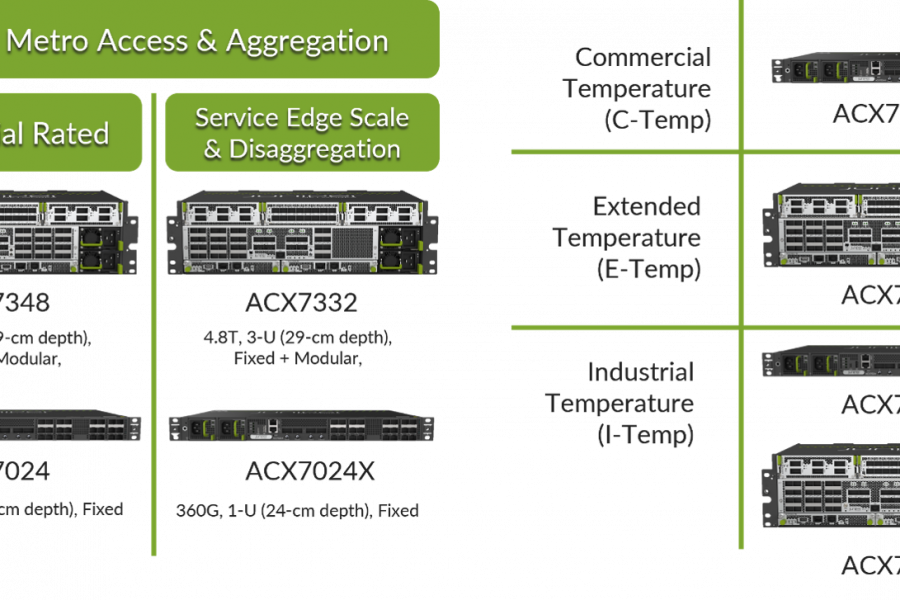The emerging mobile telecom landscape represents a radical departure from anything that’s come before. Multiple converging trends — cloudification, disaggregation, openness, software-defined everything and artificial intelligence (AI)/machine learning (ML) are redefining communication service provider (CSP) networks and services. The good news is that these trends unlock new capabilities and use cases that fuel business transformation for CSPs and their customers. By using open radio access network (O-RAN) architecture, for example, CSPs can open historically closed, proprietary radio access networks (RAN) to a growing ecosystem of third-party vendors and software innovations. The RAN Intelligent Controller (RIC), which controls and optimizes RAN functions, is a critical component of the O-RAN architecture that enables and ultimately allows service providers to build an intelligent and smarter RAN. With the RIC, service providers have a platform to deliver new functions and user experiences with greater agility and ease.
Juniper Networks is applying its networking leadership to accelerate the development of the O-RAN ecosystem. Juniper is a leading contributor to the O-RAN Alliance and has developed an innovative, standards-compliant O-RAN RIC platform. Recently, Juniper completed RIC trials with several Tier 1 service providers and other ecosystem partners to demonstrate innovative applications that can automate and optimize RAN operations at scale while supporting innovative use cases that lower mobile operators’ total cost of ownership (TCO) and enhance customers’ quality of experience (QoE).
Juniper RAN Intelligent Controller
Juniper Networks’ RAN Intelligent Controller (RIC), incubated in Juniper Beyond Labs, is like an operating system of the radio that brings intelligence, agility and programmability to radio access networks (RAN) by enabling third-party applications (known as rApps/xApps) that can improve service experience, reduce infrastructure and operational costs and deliver new business models.
The Juniper RIC platform is based on a cloud-native microservices architecture and is fully compliant with the O-RAN specifications and interfaces. The Juniper RIC includes the Non-Real-Time RIC (Non-RT), the Near-Real-Time RIC (Near-RT) and specialized applications called rApps and xApps to control the RAN network functions, O-RAN Distributed Units (O-DUs) and O-RAN Central Units (O-CUs). It supports both an open API and an SDK for integration with any third-party O-RAN-compliant xApps or rApps, giving network operators greater flexibility and choice of suppliers. The Juniper RIC integrates with any O-RAN-compliant service management and orchestration (SMO) solution.
RIC Trials with Service Providers
Over the last 18 months, Juniper has completed RIC trials with several Tier 1 service providers, including:
- Vodafone RIC Trial: Vodafone and Juniper, in partnership with Parallel Wireless, completed a successful field trial on Vodafone’s commercial network, validating both Admission Control and Traffic Steering applications on top of the Juniper RIC platform. The Admission Control rApp/xApp from Juniper Networks allows real-time tracking and optimization of radio resources such as User Equipment (UEs) and Protocol Data Unit (PDUs) based on current traffic utilization. This rApp/xApp can provide priority services for a category of users such as public safety tenants, hospitals and more. The Traffic Steering xApp from Parallel Wireless, in conjunction with Juniper’s rApp, enhances the user experience by dynamically balancing the load across the network. The xApp looks at the UE metrics to identify the UE with the worst throughput and improves its experience by moving it to an adjacent, lightly loaded cell. In Vodafone’s live network, throughput improvements of 40% were observed for users experiencing low performance, and an average of 15-30% improvement was observed across all users in the overloaded cell.
- Non-RT RIC trial with a Tier 1 European Operator: Juniper has successfully completed a Non-RT RIC trial with a Tier 1 European operator. The trial includes the Juniper Non-RT RIC Platform with AirHop PCI (Physical Cell Identity) Optimization rApps integrated with O-RAN O-CU/O-DUs from a third-party vendor. The Juniper Non-RT RIC was also integrated with a third-party ONAP-based orchestration platform.
- RIC Trial with Tier-1 European Operator: Juniper has completed both Non-RT RIC and Near-RT RIC trials with the 5G Slice-Aware Admission control rApp and xApp, integrating with Casa Systems RAN network functions.
RIC Engagements with Ecosystem Partners
Juniper has also been working with other ecosystem partners to demonstrate innovative use cases on O-RAN.
Aira Technologies, an AI/ML start-up, demonstrated an ML-based dynamic radio network management solution on the Juniper RIC to help mobile operators reduce RAN energy consumption by up to 20%.
Juniper also demonstrated Energy Savings use case with Keysight emulators at O-RAN PlugFest 2022. This use case can deliver energy savings by switching off cell, network element and network function during periods of low traffic. Additionally, Juniper demonstrated RAN Slice SLA Assurance use case with Keysight emulators.
Key Learnings from the Latest RIC Trials and Engagements
There are many learnings for Juniper Networks, as well as the broader industry, from these RIC trials and engagements. The most important among them is conformance to open architecture and APIs for interoperability.
- Open and Interoperable RIC Platform: All of these trials highlight the importance of having an open and interoperable RIC platform for innovation and automation. The Juniper RIC provides both a network-based and an SDK-based API for third parties to enable rapid application development. In the trials we executed with customers, applications were ported on top of the Juniper RIC platform in just a few days. The Juniper RIC was also integrated with O-CU/O-DU from multiple RAN vendors using the E2 interface.
- Near Real-Time Management: Juniper has demonstrated near real-time management of radio resources in trials with RAN vendors who have opened up E2 service models. The Vodafone trial validated that the Juniper RIC can be used for real-time management of radio resources paving the way for an Open and Smarter RAN. The Admission Control application allows for the dynamic allocation of network resources without the need for over-provisioning. As a result, operators can achieve cost savings with automated operations and reduced equipment needs while providing an improved QoS. Similarly, the Traffic Steering application efficiently utilizes operator resources to meet capacity demands without requiring manual intervention, thereby helping to improve QoS, reduce costs and minimize errors.
- Maturing Ecosystem: Over the past two years, there has been significant interest across the industry in O-RAN, with many players contributing to developing specifications at the O-RAN Alliance. Service providers have taken the lead in trialing O-RAN RIC with innovative use cases, and many ecosystem players have formed innovative partnerships across the industry. For example, Rakuten Symphony announced Juniper RIC as its exclusive RIC for its Symworld marketplace. This collaboration will enable quicker validation of new rApps/xApps, thus accelerating the overall O-RAN ecosystem. IBM will also integrate Juniper’s RIC with IBM Cloud Pak for Network Automation (IBM CP4NA) to offer end-to-end automation of secured 5G network slices. We’ve also seen specialized AI/ML start-ups, such as Aira technologies, building innovative applications by making use of the radio data available from the RAN.
Accelerating Progress on O-RAN
Juniper has always advocated for openness and interoperability in networking because it fosters innovation. We believe that democratizing the RAN space gives service providers the freedom to select best-of-breed vendors when designing and building their infrastructure. This helps to reduce costs, drive simplicity in design, build and operation and ultimately, speed of deployment.
Juniper’s RIC trials and ecosystem engagements demonstrated innovative software applications such as Energy Saving, Admission Control, Traffic Steering and RAN Slice Assurance that lowers mobile operators’ total cost of ownership (TCO) and enhances customers’ quality of experience (QoE). RIC applications can be uniformly deployed cost-effectively in a multi-vendor deployment. Applications can be developed once and run anywhere instead of having each radio vendor deploy their own proprietary solution. RIC also provides flexibility to mobile operators to choose innovative rApps/xApps from a variety of suppliers. This ability to deploy innovative applications from third-party vendors on top of the RIC platform helps unlock the full potential of O-RAN.
O-RAN has come a long way in the industry. To accelerate progress, industry players should embrace open architecture and APIs for interoperability. Additionally, they should make radio data available for the broader industry so that newer, more innovative companies can better use the data and realize the promise of O-RAN.
To learn more about how Juniper delivers on the promise of O-RAN with RIC and SMO, catch the on-demand replay of the Open RAN World 2023 Keynote on The Feed.


